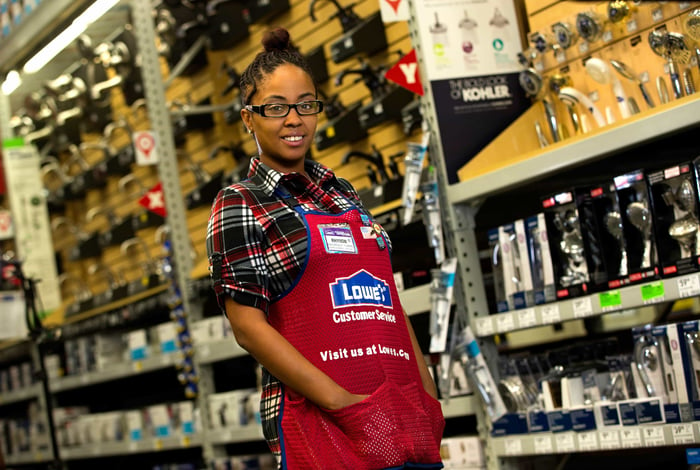What do Extra Space Storage (EXR -1.30%), General Electric (GE -3.19%), and Lowe's (LOW 0.63%) all share in common? They're all top-notch stocks that retirees could add to their portfolios right now for generous returns on their investment.
According to three top Motley Fool contributors, each of these companies is offering a discount to investors, but has unique catalysts that could help their share prices climb and their dividends grow. Read on to learn more.

Image source: Extra Space Storage.
A REIT built for retirement
Travis Hoium (Extra Space Storage): Senior citizens who are staying in the stock market rather than bonds may want to look for companies that can generate consistent cash flow to pay dividends. Extra Space Storage is both a great cash flow company that pays a regular dividend and an tax-efficient investment because it's a real estate investment trust (REIT).
Extra Space Storage is simply a storage company that builds structures that customers rent a section of for a monthly fee. It's really as simple as that. And you can see below that the company has shown tremendous growth since the recession, and the dividend has risen sharply as a result.
As a REIT, the company has to pay most of its cash flow as a dividend, avoiding paying corporate taxes as a result. And while a recession or another driver of declining demand could lead to a drop in results (and the dividend), the company has its real estate assets to fall back on in a worst-case scenario. That kind of tangible real estate underlying an investment is a great asset for senior citizens, and the 4% dividend yield is a nice payout annually as well.

Image source: Getty Images.
A new look for an old company
Tyler Crowe (General Electric): Shares of General Electric haven't been lighting the world on fire lately. Over the past three years, the company's stock has only gained a paltry 6% while the S&P 500 has gained 26% over the same time frame. Some of that underperformance can be attributed to headwinds in its oil and gas division, but at the same time, the company is in the middle of a major transformation that will set the stage for what could be decades.
CEO Jeff Immelt has his sights on transforming General Electric from a diversified conglomerate into a focused industrial manufacturer specializing in remote sensing and big data analytics. The combination of the two will not only improve manufacturing and productivity for General Electric but will also provide customers with new unique services like operation optimization and predictive maintenance.
One example management gave in its December outlook presentation was the oil and gas business. It estimates that after the GE/Baker Hughes merger is finalized, the combined company has an opportunity to improve oil and gas productivity by $200 billion by 2020. For GE, getting customers on board with this product and data analytics service could mean $15 billion in software revenue alone by the end of the decade.
Why this matters for older investors is it will transform General Electric into a business with much higher rates of recurring revenue -- thanks to software subscriptions -- and higher margins that will fuel free cash flow for dividends and share repurchases. These sorts of initiatives are the things investors looking for long-term income want, and at a dividend yield of 3.4%, shares of General Electric look to be a great value pick.

Image source: Lowe's.
Building on plans for a rebound
Rich Duprey (Lowe's): Taking a flier on a stock that just had a big earnings miss may seem like an odd choice for senior citizens, but Lowe's remains a quality retailer even if it is lagging behind rival Home Depot (HD 0.74%). There are reasons to believe it aims to catch up.
In the DIY center's first-quarter earnings report, comparable sales rose almost 2% and per-share profits of $1.03 missed analyst expectations of better-than-3% comps and $1.06 per share in earnings. Still, in this weakened retail environment, they remain healthy gains, even if they're well behind those its rival.
The main difference seems to be what has always separated the two companies: Home Depot's focus on building contractors and professionals, and Lowe's preference for homeowners. In the robust housing market we've enjoyed, that has put Home Depot ahead, but Lowe's has indicated it intends to remedy that shortfall.
Last week it announced it purchased wholesale retailer Maintenance Supply Headquarters for $512 million, which it said was "an important step in Lowe's strategy to deepen and broaden its relationship with the pro customer and better serve their needs." That's on top of the acquisition it made late last year for Central Wholesaler, another pro-based business that would serve the multifamily housing market.
That should help change the dynamic at Lowe's, which has typically relied upon the sale of big-ticket items for a good part of its revenue. Appliances, for example, account for 11% of sales, along with fashion fixtures, which accounts for another 10%. In contrast, Home Depot's biggest category is indoor garden, which represents slightly more than 9% of total revenue, meaning Big Orange is getting a lot more customers making a lot more smaller purchases.
Lowe's has been moving more toward the pro consumer, and its latest acquisitions show it's serious about the endeavor, which means the gap between the two should start to narrow, and the earnings disappointment this time around likely won't be repeated.
With a dividend of $1.40 per share that yields 1.7%, it's no barnburner for sure, but the DIY home improvement center remains a steady performer whose drop in price provides an entry point for investors looking for stability, the current quarter notwithstanding.





